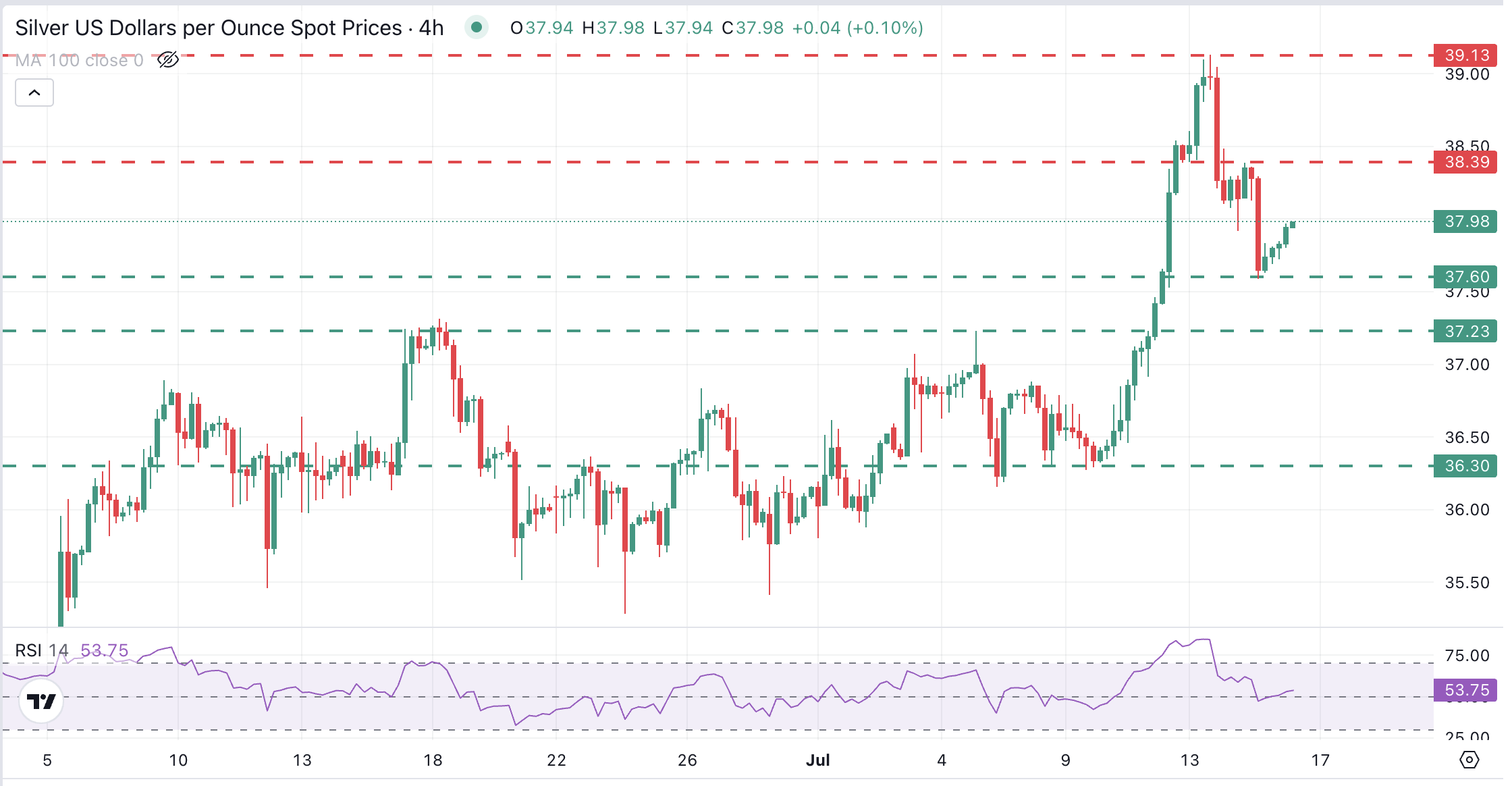Silver Price Forecast: XAG/USD picks up to $38.00 favoured by a softer US Dollar
- Silver trims losses as the US Dollar retreats ahead of the US PPI release.
- The Dollar jumped on Tuesday as strong inflation figures curbed hopes of Fed cuts.
- XAG/USD downside attempts have been above previous highs, at $37.30.
Silver (XAG/USD) is regaining some of the ground lost over the last two days and is picking up towards the $38.00 level. The US Dollar is giving up previous gains as the market digests the US CPI figures and shifts its focus towards the PPI report, due later today.
US consumer prices figures confirmed that Trump’s tariffs are starting to filter through Main Street, which strengthens Fed Powell’s “higher for longer” monetary policy stance. US yields and the US Dollar soared following the data, while the precious metals declined.
Technical Analysis: In a bullish trend, supported by $37.60
From a technical perspective, the pair is correcting lower from its long-term highs above $39.00, yet the broader bullish trend remains in play. The 4-hour Relative Strength Index has pulled back from heavily oversold levels but remains above the 50.00 level, which divides bullish from bearish territory.

Downside attempts have found buyers at $37.60 (July 15 low), and the pair is on a tentative recovery favoured by a somewhat softer USD and lower US yields ahead of the US PPI report. Resistance at the July 15 high, at $38.40, is likely to offer some resistance ahead of the mentioned multi-year high, at $3915.
On the downside, below $37.60, the pair may find support at the previous resistance of $37.25-$37.30 (June 18 and July 6 highs), ahead of the July 8 and 9 lows at $36.30.
Silver FAQs
Silver is a precious metal highly traded among investors. It has been historically used as a store of value and a medium of exchange. Although less popular than Gold, traders may turn to Silver to diversify their investment portfolio, for its intrinsic value or as a potential hedge during high-inflation periods. Investors can buy physical Silver, in coins or in bars, or trade it through vehicles such as Exchange Traded Funds, which track its price on international markets.
Silver prices can move due to a wide range of factors. Geopolitical instability or fears of a deep recession can make Silver price escalate due to its safe-haven status, although to a lesser extent than Gold's. As a yieldless asset, Silver tends to rise with lower interest rates. Its moves also depend on how the US Dollar (USD) behaves as the asset is priced in dollars (XAG/USD). A strong Dollar tends to keep the price of Silver at bay, whereas a weaker Dollar is likely to propel prices up. Other factors such as investment demand, mining supply – Silver is much more abundant than Gold – and recycling rates can also affect prices.
Silver is widely used in industry, particularly in sectors such as electronics or solar energy, as it has one of the highest electric conductivity of all metals – more than Copper and Gold. A surge in demand can increase prices, while a decline tends to lower them. Dynamics in the US, Chinese and Indian economies can also contribute to price swings: for the US and particularly China, their big industrial sectors use Silver in various processes; in India, consumers’ demand for the precious metal for jewellery also plays a key role in setting prices.
Silver prices tend to follow Gold's moves. When Gold prices rise, Silver typically follows suit, as their status as safe-haven assets is similar. The Gold/Silver ratio, which shows the number of ounces of Silver needed to equal the value of one ounce of Gold, may help to determine the relative valuation between both metals. Some investors may consider a high ratio as an indicator that Silver is undervalued, or Gold is overvalued. On the contrary, a low ratio might suggest that Gold is undervalued relative to Silver.

